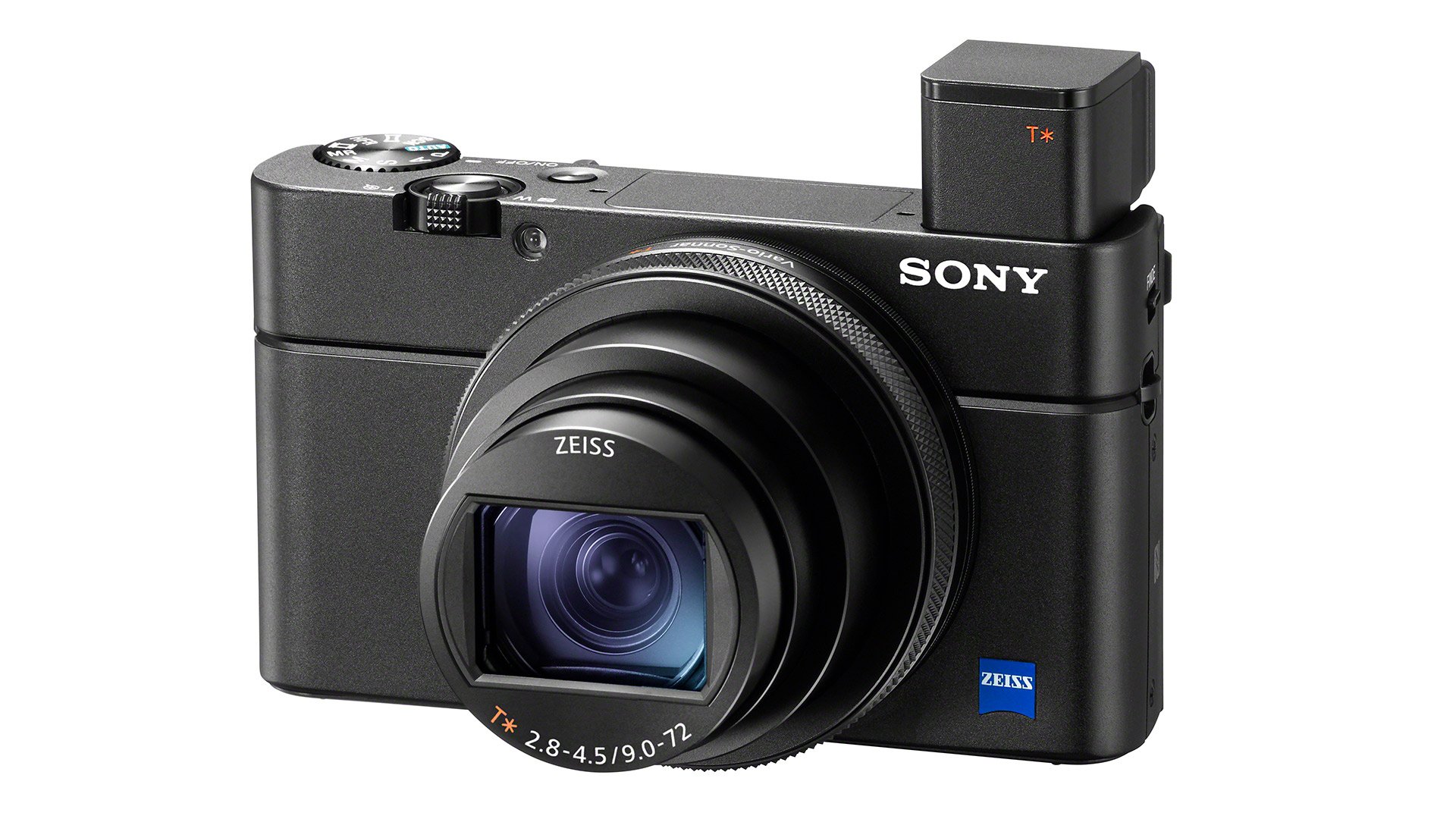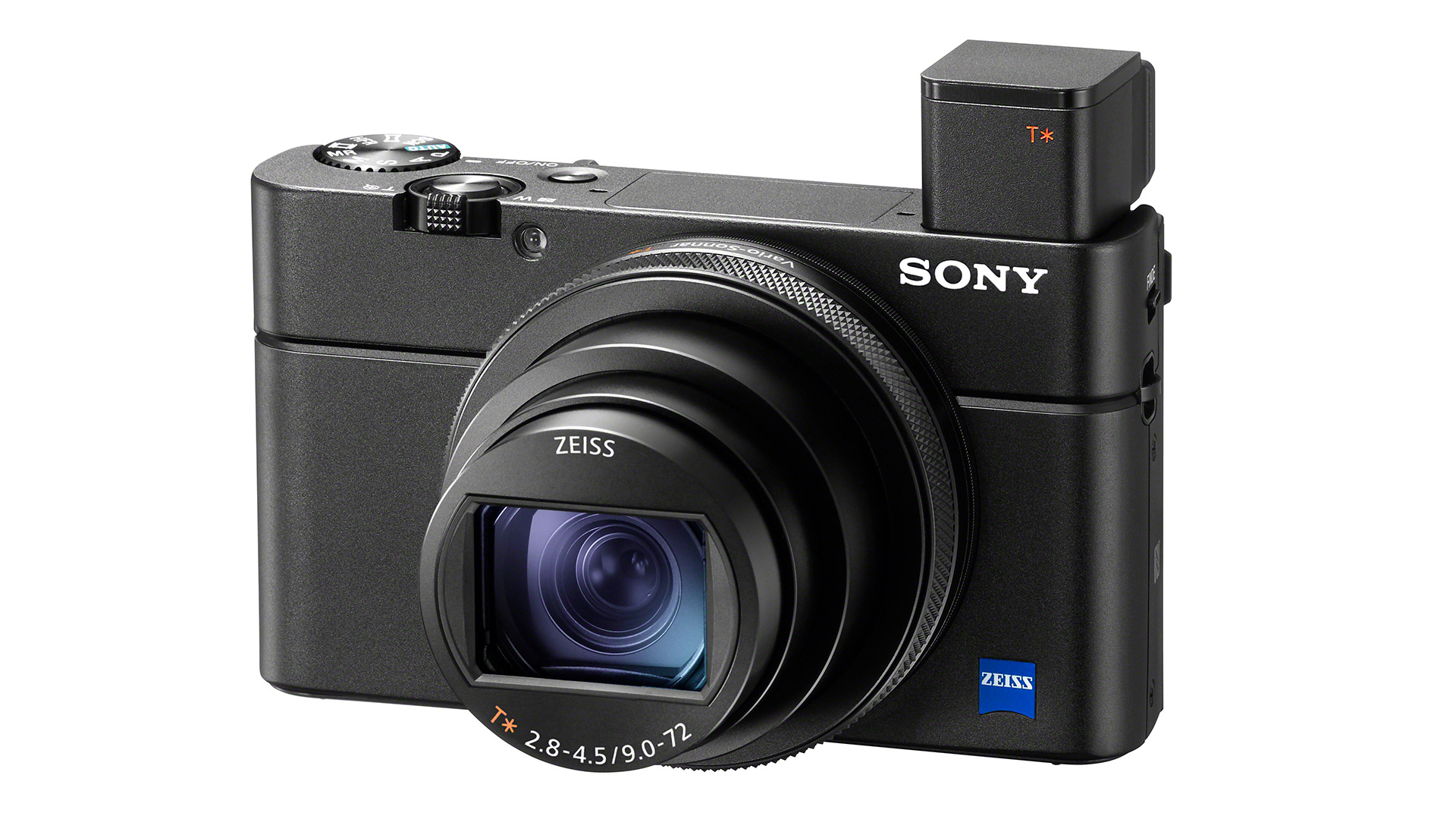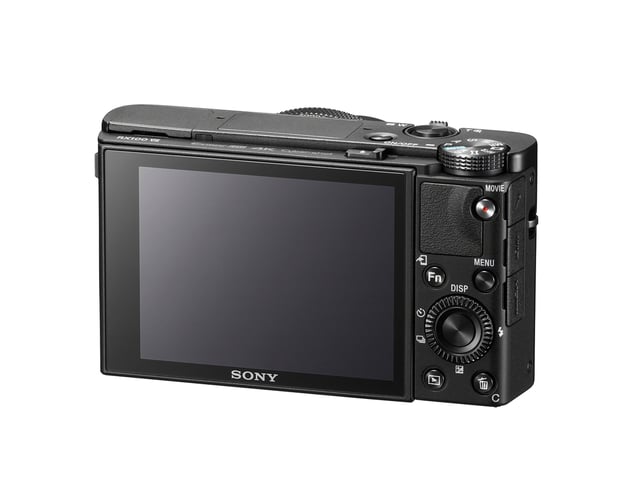
 Sony RX100 V11
Sony RX100 V11
Sony seems to be iterating its RX100 thirty times per second. Well, maybe not that fast, but it's surely only about a year since the mark V1? The V11 has just been announced and it's a significant upgrade
On the heels of the 61 megapixel A7r iv, Sony has introduced the latest in its series of 1” sensor RX series cameras, the RX100 vii.
In many regards, the RX100 vii might hold more excitement for video specific applications than the full-frame A7r iv with many features which it has inherited from Sony’s big dog the A9.
As an owner of the RX100 vi, I can definitely see this camera as a major step above the current mark vi version and it should be a camera that vloggers, documentarians, action and travel shooters should consider.
The RX100 series is a small form-factor 1” sensor camera with a built-in Zeiss zoom. The RX100 vi and now the newly introduced RX100 vii share a 24-200mm equivalent f/2.8-4.5 optic making it suitable for on-the go shooting with such a wide focal range.
Significant new features
The RX100 vii introduces significant new features that set it above previous RX100 versions as well as its competitors in this price range and sensor size.
For still photographers’ information, the sensor remains at a 20.1 megapixel resolution but the sensor itself is new with new DRAM chip and image processor. This is needed for the features to be detailed below.

Sony has always migrated technology between products and even between product lines. The RX100 vii receives Alpha A9-like capabilities with 20fps blackout free shooting, 60 AF/AE calculations per second, and focus acquisition speed of .02 sec. Phase detection autofocus with 357 point detection and 425 point contrast detection make it among the fastest cameras on the market.
It inherits human and animal eye-autofocus from the latest firmware updates for the A7rIII and A9. Note that in these cameras the user must choose whether the camera is tracking human or animal eyes.
It can shoot up to 90fps in continuous drive mode.
Now those are among the still features.
Where this camera will excel for many video applications is the fast autofocus is available in video mode as is the eye autofocus and tracking. Realtime subject tracking is yet another feature. Internal 4K SteadiShot stabilization has also been added.
A microphone input!
There is no change from earlier RX100 models in its ability to shoot up to UHD resolution in Rec709, SLog2, SLog3 or HLG gammas. Unlike many small cameras, it has a mic input jack (3.5” mini), interval shooting (new) and still records up to 960fps, albeit at greatly reduced resolution.
The RX100 series is most versatile for shooting when paired with the optional Sony Shooting Grip. In fact, I personally find the camera alone somewhat difficult to hold because it is too small. Now while that might be only the gripe of one who is accustomed to larger mirrorless/DSLR cameras and certainly much larger dedicated video cameras. But the grip allows for one handed operation with its integrated zoom rocker, still button and video button. The grip makes it considerably easier to utilize the pop-up viewfinder particularly in outdoor situations where it is difficult to see the rear screen.
In fact, for only $100 more Sony will be selling a Shooting Grip Kit for Vloggers which will include the camera, grip, bracket with accessory shoe and two batteries. This is something that I would frankly consider essential for most effective use of the camera.
And while we’re talking about batteries, buy several. If I were to criticize my RX100 vi in any way (and I presume the RX100 vii will be the same since the battery is identical) it is short battery life. It’s common to all small cameras so can’t blame it on Sony. Battery technology and sensor technology just aren’t in sync. While Sony has been able to develop a higher capacity battery for the A7 and A9 cameras, that battery technology has yet to be seen across the product spectrum.
The RX100 vii will be available in August at a price around $1200. The Shooting Grip Kit will not be available with the release of the camera and will follow at some point during 2019. It will sell for $1300.
Complete specs can be found below in Sony’s press release below
Sony Brings New Level of Power to Premium Compact Camera Line-up with introduction of the RX100 VII
Alpha 9 performance in your pocket
- Newly developed 1.0-type stacked 20.1 MP[i] Exmor RS™ CMOS image sensor with DRAM chip and latest generation BIONZ X™image processor
- Alpha 9-level speed performance with up to 60 AF/AE tracking calculations per second[ii] and 20fps[iii]blackout-free shooting[iv] with AF/AE tracking
- World leading[v] 357-point focal-plane phase-detection AF + 425-point contrast-detection AF with world’s fastestv 0.02 sec[vi] high AF speed
- Real-time Tracking and Real-time Eye AF for humans and animals[vii]
- ZEISS® Vario-Sonnar T* 24-200mm[viii] F2.8 – F4.5 Large Aperture High Magnification Zoom Lens
- New ‘Single Burst Shooting’[ix] Drive Mode at up to 90fps[x] speed
- Pro-level movie functionality including 4K[xi] HDR (HLG)[xii] , Real-time Tracking and Real-time Eye AF for movie shooting, 4K Active SteadyShot™,Vertical-position data recording for movies and integrated microphone jack
Sony today announced a new addition to its award-winning series of RX cameras with the launch of the RX100 VII (model DSC-RX100M7). Utilising technologies developed for Sony’s full-frame mirrorless camera Alpha 9, the RX100 VII achieves new levels of performance in a compact camera, in both stills and movie shooting, inspiring the user to feel confident that they are armed with professional-level power in their pocket for spontaneous shooting in everyday life.
The RX100 VII is powered by a newly developed 1.0-type stacked Exmor RS CMOS image sensor and the latest generation BIONZ X image processor. This combination delivers new levels of autofocus performance and achieves speed breakthroughs that have previously only been seen on the Alpha 9. Flexibility of shooting is ensured by a ZEISS® Vario-Sonnar T* 24-200mmviii F2.8-4.5 high magnification zoom lens, making the RX100 VII a versatile choice for all types of shooting scenarios and users, from photo enthusiasts to professionals.
New Standard for AF Performance in a Compact Camera
The RX100 VII offers a world leadingv 357 focal-plane phase-detection AF points and 425 contrast-detection AF points. In addition, thanks to a newly optimised lens drive control, world’s fastestv 0.02 secviAF acquisition time is realised. A major leap in AF/AE tracking performance during continuous shooting[xiii] means the camera performs AF/AE calculations up to 60 times per secondii and captures fast moving action at 20fpsiii with AF/AE tracking, ensuring that each moment is shot with swift and accurate focus.
In addition, the image sensor realises blackout-free shootingiv for a completely live view, even when continuous shooting at 20fpsiii; the same experience as the Alpha 9.The RX100 VII also debuts a new drive mode, Single Burst Shootingix, for capturing the perfect high-speed shot at up to 90fpsx in JPEG/RAW format utilising the anti-distortion shutter. ‘Single Burst Shooting’ix allows the photographer to frame fast moving action and shoot as if taking a single shot but the camera will actually deliver 7 still images, taken at 90fps, 60fps or 30fps, so the user can select the perfect moment.
For the first time in a compact camera, the RX100 VII introduces advanced ‘Real-time Tracking’ and ‘Real-time Eye AF’ capabilities. ‘Real-time Tracking’ utilises Sony’s latest algorithm including artificial intelligence-based object recognition to ensure that subjects can be captured with excellent accuracy, even via the touch panel on the rear screen. ‘Real-time Eye AF’, the latest version of Sony’s acclaimed Eye AF technology, employs AI-based object recognition to detect and process eye data in real time, resulting in improved accuracy, speed and tracking performance of Eye AF for both humans and animalsvii, and allows the photographer to concentrate exclusively on composition[xiv].
Movie-Making Marvel
The compact and lightweight characteristics of the RX100 VII (approx. 302g / 102mm x 58mm x 43mm[xv]) mean it can always be carried around and can be mounted in places that larger cameras cannot. But its small factor belies a multitude of pro-level movie-making capabilities perfect for on-the-go shooting such as vlogging:
- 4K in-body movie recording with full pixel readout and no pixel binning in high bit rate XAVCS™xi
- Real-time Tracking and Real-time Eye AF for video
- 4K Active SteadyShot that is 8x more effective than 4K Standard SteadyShot[xvi]
- Integrated Microphone input[xvii]
- Hybrid Log-Gamma (HDR) / S-Gamut3.Cine / S-Log3, S-Gamut3/S-Log3
- Compatibility with ‘Movie Edit add-on’ from the ‘Imaging EdgeTM’ mobile application for movie stabilisation and editing
- Vertical-position data recording for movies[xviii]
- Interval Shooting[xix] for stunning time-lapse videos
- Super Slow Motion[xx] recording at up to 1000fps
- 180-degree flip screen for ease-of use whilst vlogging
“The RX100 VII sets new standards for both photography and videography in a compact camera and we are confident that its phenomenal speed and AF capabilities will be very well received by customers,” said Yann Salmon Legagneur, Director of Product Marketing, Digital Imaging, Sony Europe. “Users will feel the reassurance that that they have the power of an Alpha 9 in their pocket, in compact form, so they can trust this camera in any given situation.”
Shooting Grip Kit for Vloggers
A simple vlogging setup with an external microphone is made possible with the Shooting Grip Kit(DSC-RX100M7G). The kit includes an RX100 VII, Shooting Grip (VCT-SGR1) which allows for easy recording and zooming right at your fingertips, Bracket with Accessory Shoe to attach the Microphone, and two Rechargeable Battery Packs(NP-BX1)[xxi].
New Jacket Case for the RX100 Series
Sony has also introduced a new leather-look body case for the RX100 series(LCJ-RXK) which includes a lens jacket and shoulder strap to protect the camera from bumps and shocks. It provides easy access to the microphone jack and USB terminal which enables charging and image transfers without the need to remove the case. Available in Black or Beige.
Pricing and Availability
The RX100 VII and LCJ-RXK will ship in Europe in August 2019 priced at approximately €1,300 and £1,200 and €85 respectively.
[i] Approximate effective megapixels
[ii] When using the electronic shutter; effective when the shutter speed is 1/60 or above
[iii] When using the electronic shutter with "Continuous shooting mode: Hi". Effective when the shutter speed is 1/60 or above
[iv]Effective when using electronic shutter. The slower the shutter speed, the lower the refresh rate of the screen
[v] Among fixed-lens digital still cameras with 1.0-type sensor. As of July 2019, based on Sony research
[vi] CIPA standard, internal measurement, at f=9.0mm (wide-end), EV6.6, Program Auto, Focus mode: AF-A, Focus area: Centre
[vii] Real-time Eye AF for Animals supports still images only, and cannot be used in combination with tracking. Does not work with some types of animal. Focusing may not perform well depending on scene and subject conditions
[viii] Angle of view (35mm format equivalent)
[ix] Seven still images are shot per burst. Focus and exposure are fixed at the first shot
[x] When Drive Mode is set to “Single Burst Shooting: Hi”
[xi]3840×2160 pixels. A Class 10 or higher SDHC/SDXC memory card is required to record movies in the XAVC S format. UHS-I (U3) SDHC/SDXC card is required for 100Mbps. When “Auto Power Off Temperature” is set to “Standard”, continuous shooting is possible for about 5 minutes
[xii] Connect this product to an HDR (HLG) compatible Sony TV via a USB cable to display HDR (HLG) movies
[xiii] Compared to RX100 VI
[xiv] Both right eye and left eye are selectable, either via the menu or by the touchscreen panel
[xv]Width x Height x Depth
[xvi] Image compensation angle at wide-end (Comparison with 4K standard mode)
[xvii] Attaching a mic without the Shooting Grip Kit requires an optional accessory
[xviii] In-camera movie playback is in the horizontal position. Whether or not movies are displayed in the vertical position depends on your device
[xix] Wi-Fi does not work during interval shooting
[xx] Audio recording is not available. A Class 10 or higher SDHC/SDXC memory card is required
[xxi]One included with RX100 VII body
Tags: Production


Comments